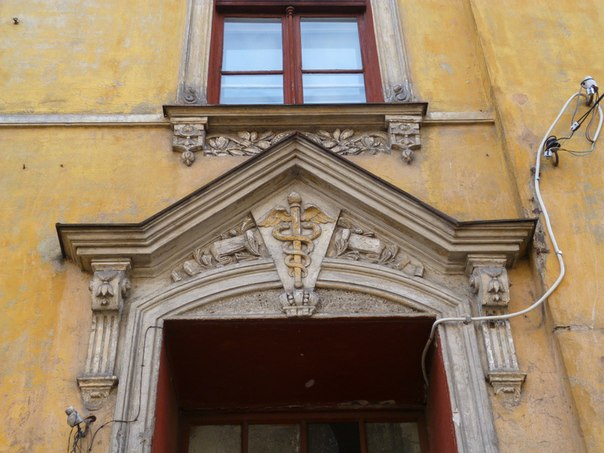Советск — второй по размерам и значимости город Калининградской области. Несмотря на номенклатурное название, звучащее как убогий шаблон, этот город обладает богатым рукотворным наследием и уникальным историческим контекстом.
Расположен Советск на реке Неман (нем. Memel). В «Песне немцев», разные строфы которой в различные эпохи являлись гимном Германии, Мемель упомянут как восточный рубеж страны. Водоток действительно долгое время являлся границей Германии с Россией. Ситуация поменялась буквально вверх дном после выхода Литвы из состава СССР: с тех пор левый берег в этом месте принадлежит России, а правый, литовский, уже более десяти лет входит в состав Евросоюза, то есть де-факто контролируется Берлином (пусть и опосредованно). Такая кардинальная территориальная рокировка — весьма редкий пример в мировой истории.
Через Неман переброшен мост Королевы Луизы — узнаваемый символ города с пышными портальными арками. Внушительная часть этого сооружения была утрачена в ходе Второй мировой, но даже сохранившихся деталей достаточно, чтобы впечатлить своим изяществом. Открытие переправы было приурочено к столетию Тильзитского мира — заключённого здесь в 1807 году соглашения между Наполеоном и Александром I о новой расстановке сил в Европе, с обязательствами о взаимопомощи и секретными протоколами. Ну а в 1812 году случилось сами знаете что (ничего не напоминает?).
Да, кстати, именно Тильзит — подлинное имя города. И даже если история в школе вас не сильно интересовала, упоминание о нём вы вполне могли встречать в быту. Например, в сырной лавке: Тильзитер — это полутвёрдый сыр с насыщенным вкусом, производство которого было начато в этом городе в середине XIX века. Рецепт изобрели здесь швейцарские переселенцы из долины Эмменталь и назвали своё детище в честь своей новой родины. А так как сорт не защищён торговой маркой, производства Тильзитера впоследствии появились и в самой Швейцарии, а позже — в иных немецких землях, а также в России, Литве, Финляндии, Белоруссии и других странах.
Что же касается самого города, то он полон изысканных деталей вроде барельефов, резных дверей и прочих архитектурных излишеств. Их число, впрочем, стремительно сокращается ввиду непонимания местного населения высокой ценности этого наследия и необходимости его сохранять. А жаль, ведь этот город мог бы стать очень привлекательным с точки зрения туризма. Нынешнее же его существование обусловлено главным образом погранпереходом.
Расположен Советск на реке Неман (нем. Memel). В «Песне немцев», разные строфы которой в различные эпохи являлись гимном Германии, Мемель упомянут как восточный рубеж страны. Водоток действительно долгое время являлся границей Германии с Россией. Ситуация поменялась буквально вверх дном после выхода Литвы из состава СССР: с тех пор левый берег в этом месте принадлежит России, а правый, литовский, уже более десяти лет входит в состав Евросоюза, то есть де-факто контролируется Берлином (пусть и опосредованно). Такая кардинальная территориальная рокировка — весьма редкий пример в мировой истории.
Через Неман переброшен мост Королевы Луизы — узнаваемый символ города с пышными портальными арками. Внушительная часть этого сооружения была утрачена в ходе Второй мировой, но даже сохранившихся деталей достаточно, чтобы впечатлить своим изяществом. Открытие переправы было приурочено к столетию Тильзитского мира — заключённого здесь в 1807 году соглашения между Наполеоном и Александром I о новой расстановке сил в Европе, с обязательствами о взаимопомощи и секретными протоколами. Ну а в 1812 году случилось сами знаете что (ничего не напоминает?).
Да, кстати, именно Тильзит — подлинное имя города. И даже если история в школе вас не сильно интересовала, упоминание о нём вы вполне могли встречать в быту. Например, в сырной лавке: Тильзитер — это полутвёрдый сыр с насыщенным вкусом, производство которого было начато в этом городе в середине XIX века. Рецепт изобрели здесь швейцарские переселенцы из долины Эмменталь и назвали своё детище в честь своей новой родины. А так как сорт не защищён торговой маркой, производства Тильзитера впоследствии появились и в самой Швейцарии, а позже — в иных немецких землях, а также в России, Литве, Финляндии, Белоруссии и других странах.
Что же касается самого города, то он полон изысканных деталей вроде барельефов, резных дверей и прочих архитектурных излишеств. Их число, впрочем, стремительно сокращается ввиду непонимания местного населения высокой ценности этого наследия и необходимости его сохранять. А жаль, ведь этот город мог бы стать очень привлекательным с точки зрения туризма. Нынешнее же его существование обусловлено главным образом погранпереходом.
Sovetsk is the second largest and largest city in the Kaliningrad region. Despite the nomenclature name, which sounds like a miserable template, this city has a rich man-made heritage and a unique historical context.
Sovetsk is located on the Neman River (German: Memel). In the "Song of the Germans", the various stanzas of which at different times were the anthem of Germany, Memel is mentioned as the eastern frontier of the country. For a long time, the watercourse was the border of Germany with Russia. The situation literally changed upside down after Lithuania left the USSR: since then, the left bank in this place has belonged to Russia, and the right, Lithuanian, has been part of the European Union for more than ten years, that is, it is de facto controlled by Berlin (albeit indirectly). Such a cardinal territorial castling is a very rare example in world history.
The Queen Louise Bridge, a recognizable symbol of the city with lush portal arches, is thrown across the Neman. An impressive part of this building was lost during the Second World War, but even the surviving details are enough to impress with its grace. The opening of the crossing was timed to coincide with the centenary of the Tilsit Peace - an agreement concluded here in 1807 between Napoleon and Alexander I on a new alignment of forces in Europe, with obligations for mutual assistance and secret protocols. Well, in 1812, you yourself know what happened (doesn’t resemble anything?)
Yes, by the way, Tilsit is the real name of the city. And even if the history of the school did not interest you very much, you could very well meet the mention of it in everyday life. For example, in a cheese shop: Tilsiter is a semi-hard cheese with a rich taste, the production of which was started in this city in the middle of the 19th century. The Swiss immigrants from the Emmental Valley invented the recipe here and named their brainchild in honor of their new homeland. And since the variety is not protected by the trademark, Tilziter's production subsequently appeared in Switzerland itself, and later in other German lands, as well as in Russia, Lithuania, Finland, Belarus and other countries.
As for the city itself, it is full of exquisite details such as bas-reliefs, carved doors and other architectural excesses. Their number, however, is rapidly declining due to a lack of understanding by the local population of the high value of this heritage and the need to preserve it. It's a pity, because this city could become very attractive from the point of view of tourism. Its current existence is mainly due to the border crossing.
Sovetsk is located on the Neman River (German: Memel). In the "Song of the Germans", the various stanzas of which at different times were the anthem of Germany, Memel is mentioned as the eastern frontier of the country. For a long time, the watercourse was the border of Germany with Russia. The situation literally changed upside down after Lithuania left the USSR: since then, the left bank in this place has belonged to Russia, and the right, Lithuanian, has been part of the European Union for more than ten years, that is, it is de facto controlled by Berlin (albeit indirectly). Such a cardinal territorial castling is a very rare example in world history.
The Queen Louise Bridge, a recognizable symbol of the city with lush portal arches, is thrown across the Neman. An impressive part of this building was lost during the Second World War, but even the surviving details are enough to impress with its grace. The opening of the crossing was timed to coincide with the centenary of the Tilsit Peace - an agreement concluded here in 1807 between Napoleon and Alexander I on a new alignment of forces in Europe, with obligations for mutual assistance and secret protocols. Well, in 1812, you yourself know what happened (doesn’t resemble anything?)
Yes, by the way, Tilsit is the real name of the city. And even if the history of the school did not interest you very much, you could very well meet the mention of it in everyday life. For example, in a cheese shop: Tilsiter is a semi-hard cheese with a rich taste, the production of which was started in this city in the middle of the 19th century. The Swiss immigrants from the Emmental Valley invented the recipe here and named their brainchild in honor of their new homeland. And since the variety is not protected by the trademark, Tilziter's production subsequently appeared in Switzerland itself, and later in other German lands, as well as in Russia, Lithuania, Finland, Belarus and other countries.
As for the city itself, it is full of exquisite details such as bas-reliefs, carved doors and other architectural excesses. Their number, however, is rapidly declining due to a lack of understanding by the local population of the high value of this heritage and the need to preserve it. It's a pity, because this city could become very attractive from the point of view of tourism. Its current existence is mainly due to the border crossing.










У записи 17 лайков,
0 репостов,
434 просмотров.
0 репостов,
434 просмотров.
Эту запись оставил(а) на своей стене Zhenya Toropov






































